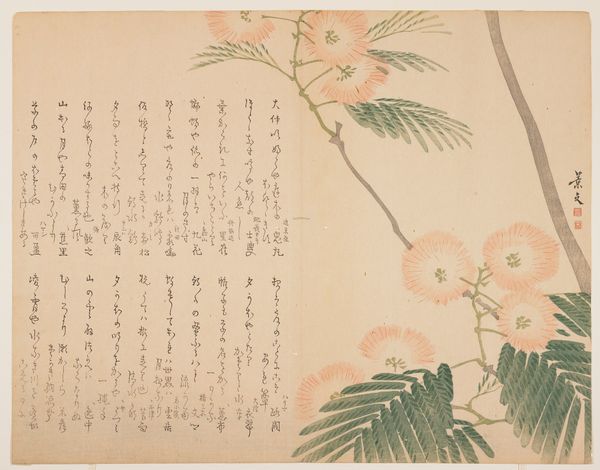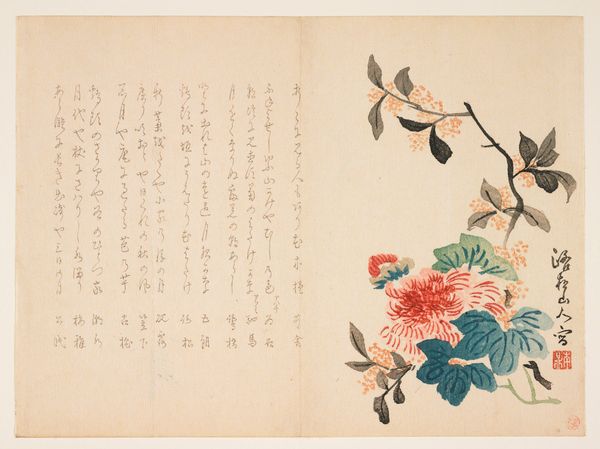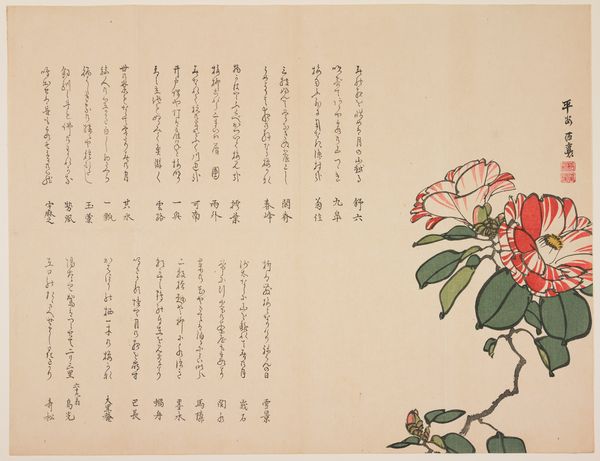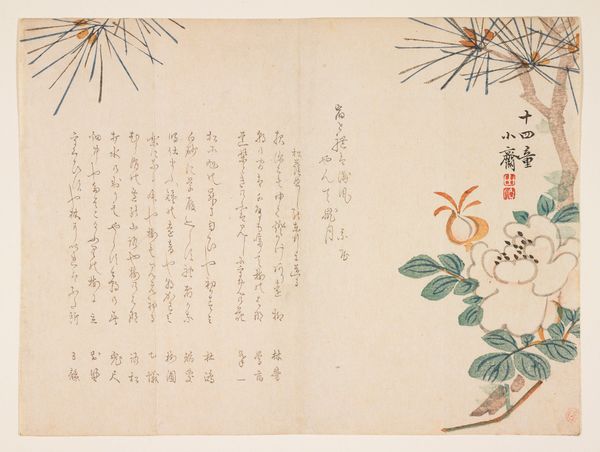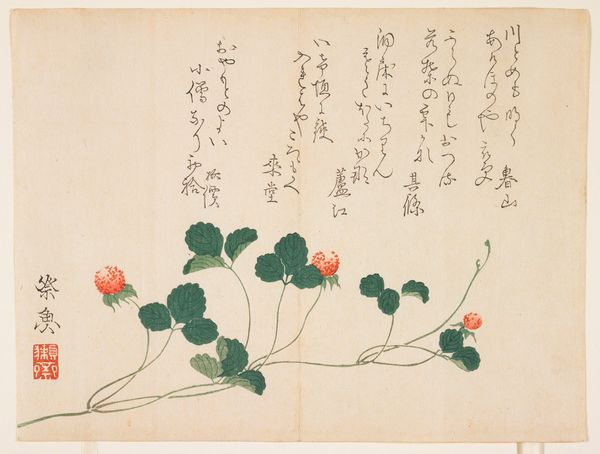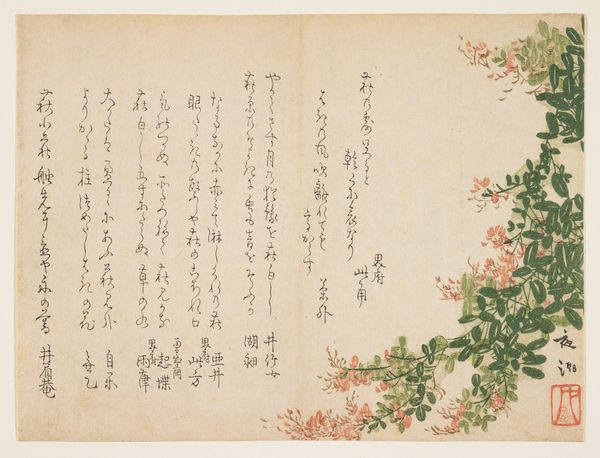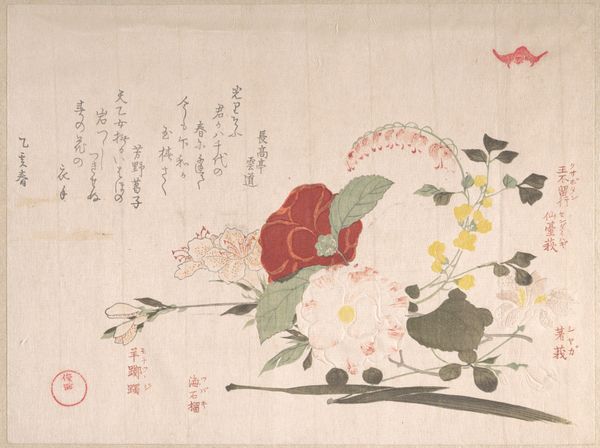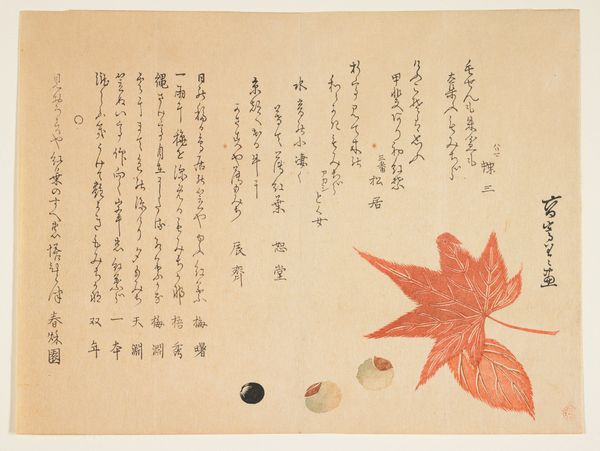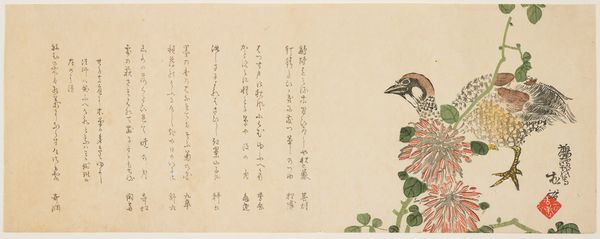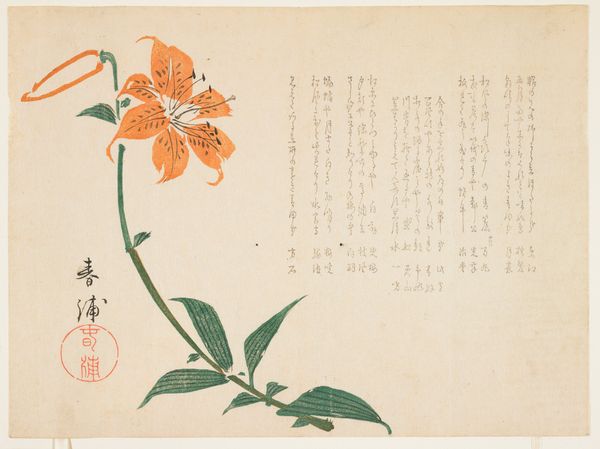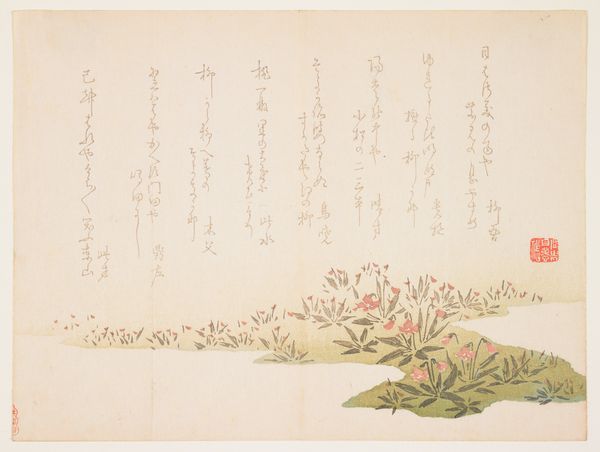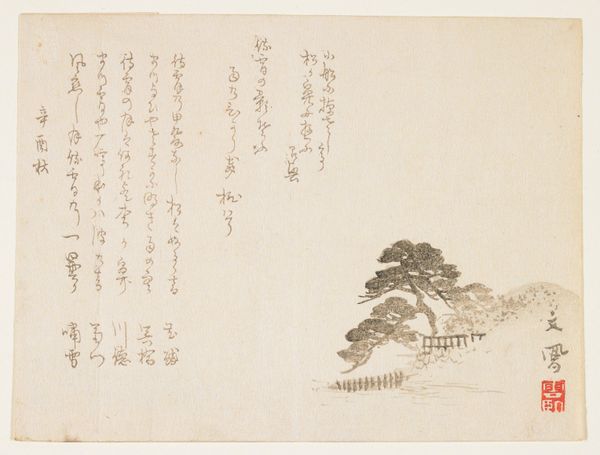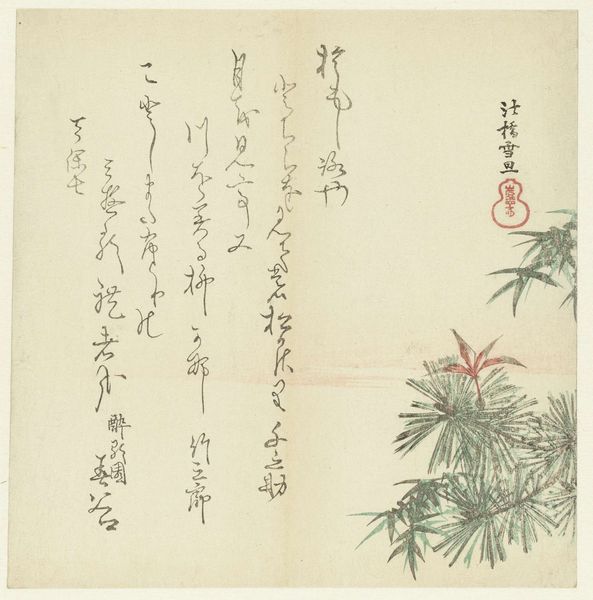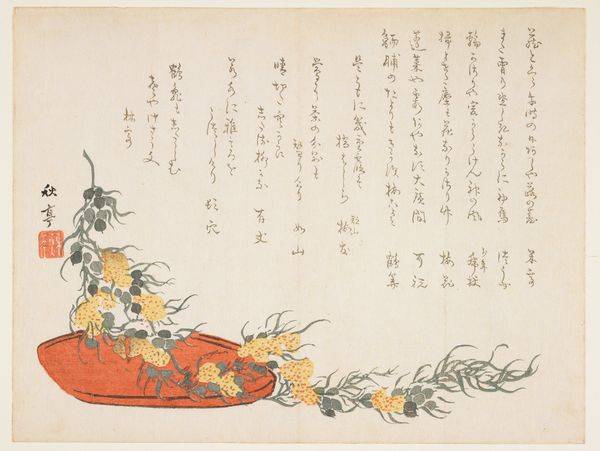
Dimensions: 7 1/4 x 9 1/2 in. (18.4 x 24.1 cm) (image, sheet)
Copyright: Public Domain
Kitagawa Saigyo's woodblock print shows a flowering silk tree, and evokes a world of nature and poetry. This Japanese work invites us to consider the intersection of art, literature, and the natural world. The delicate rendering of the silk tree, a motif often associated with beauty and transience, suggests a reflection on the fleeting nature of life. The inclusion of calligraphy alongside the image points to a rich cultural tradition where visual and literary arts were deeply intertwined. In Japan, poetry and painting were not seen as separate disciplines, but rather as complementary forms of expression. Woodblock prints like this were not just decorative items; they were carriers of cultural values, social meanings, and a refined aesthetic sensibility. By studying the historical context of this print, we can gain a deeper understanding of the cultural and intellectual landscape of 19th-century Japan.
Comments
minneapolisinstituteofart almost 2 years ago
⋮
Silk trees are a common sight in gardens and along boulevards in Japan. Their luxuriant foliage offers welcome shade in the heat of summer. Silk trees also produce elegant, pale pink flowers, as depicted here. Saigyo's rendering well represents their downy texture. Because its leaves close during the night and droop downward, the silk tree is popularly called "nemu no ki" or "sleeping tree" in Japanese. This unusual feature has inspired many poets who lyrically refer to "sleeping trees" in their verses about summer.
Join the conversation
Join millions of artists and users on Artera today and experience the ultimate creative platform.
